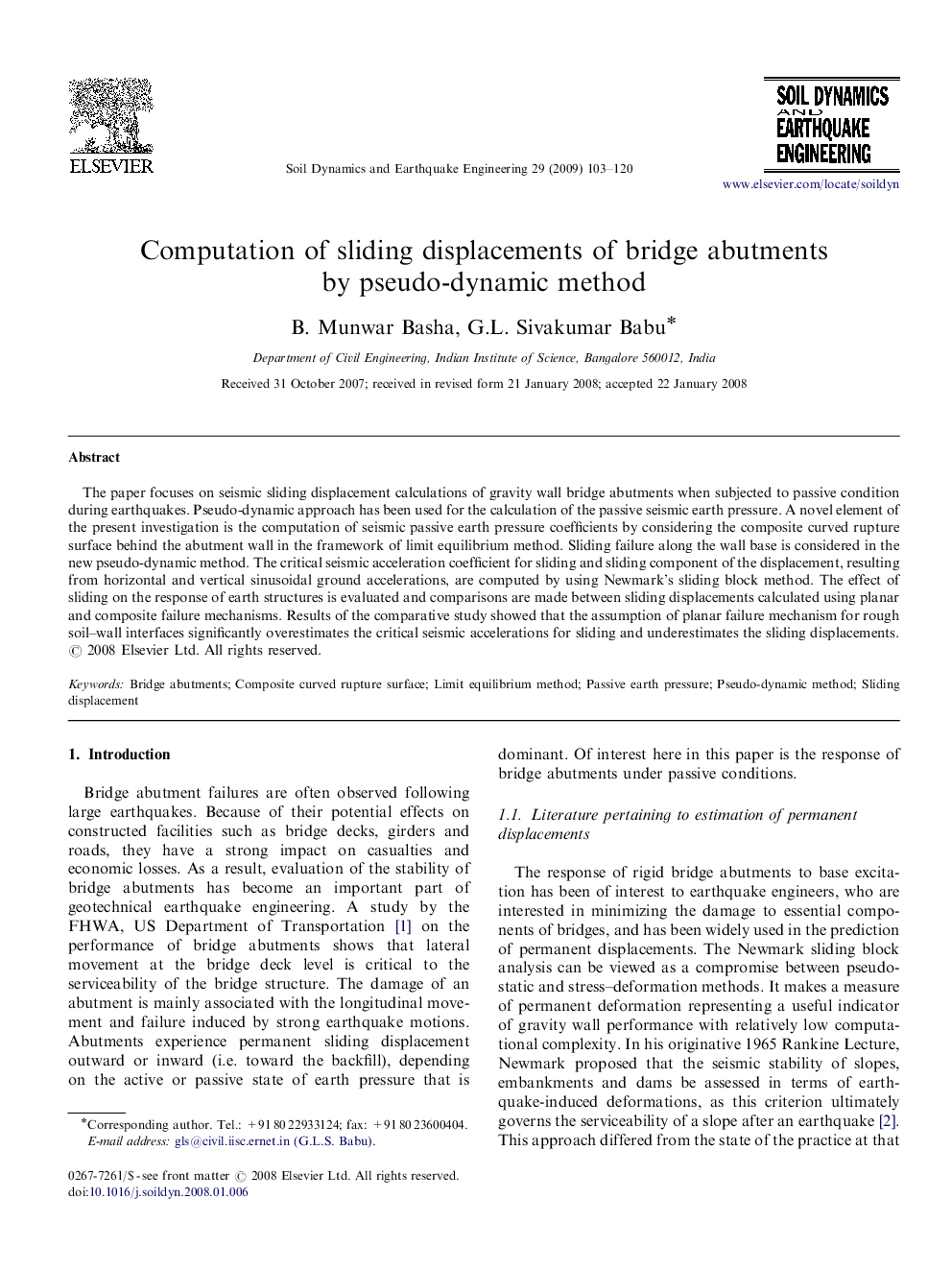| Article ID | Journal | Published Year | Pages | File Type |
|---|---|---|---|---|
| 305105 | Soil Dynamics and Earthquake Engineering | 2009 | 18 Pages |
The paper focuses on seismic sliding displacement calculations of gravity wall bridge abutments when subjected to passive condition during earthquakes. Pseudo-dynamic approach has been used for the calculation of the passive seismic earth pressure. A novel element of the present investigation is the computation of seismic passive earth pressure coefficients by considering the composite curved rupture surface behind the abutment wall in the framework of limit equilibrium method. Sliding failure along the wall base is considered in the new pseudo-dynamic method. The critical seismic acceleration coefficient for sliding and sliding component of the displacement, resulting from horizontal and vertical sinusoidal ground accelerations, are computed by using Newmark's sliding block method. The effect of sliding on the response of earth structures is evaluated and comparisons are made between sliding displacements calculated using planar and composite failure mechanisms. Results of the comparative study showed that the assumption of planar failure mechanism for rough soil–wall interfaces significantly overestimates the critical seismic accelerations for sliding and underestimates the sliding displacements.
